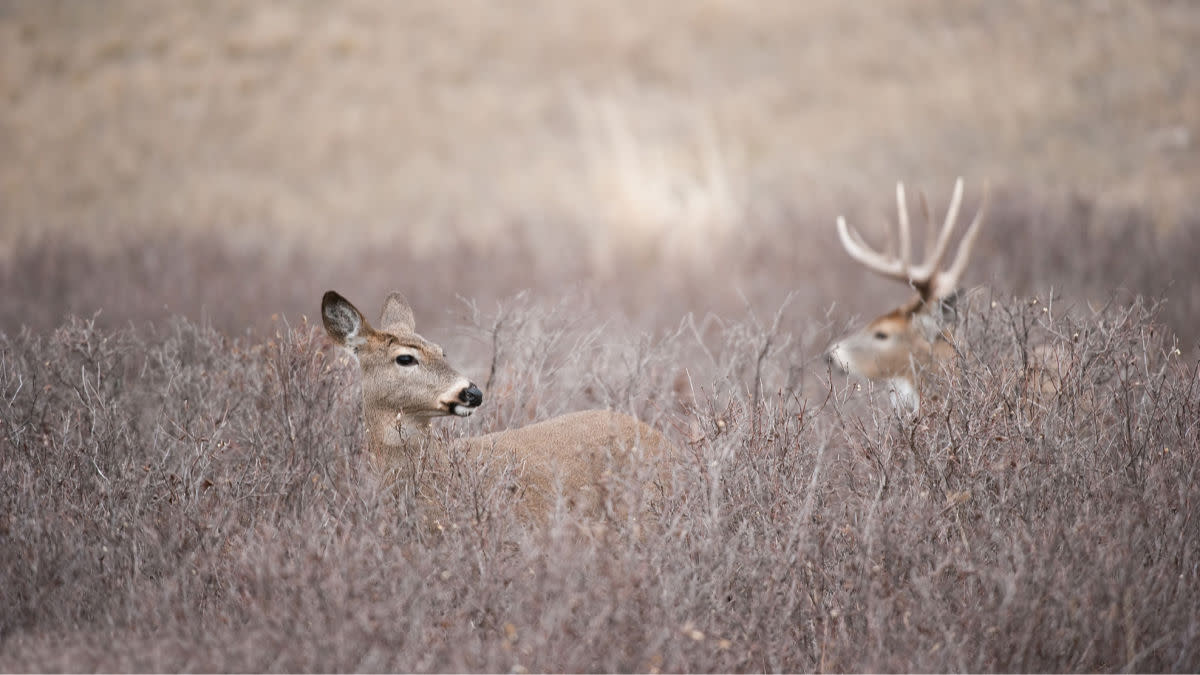
Deer calls (and conventional calling advice) focus almost solely on drawing bucks into range. Even when it comes to grunt tubes or can calls that allow you to produce fawn or doe bleats, the idea is to signal to a nearby buck that ladies are close. But, it’s not just the antlered members of the herd that you can speak to. Talking does into range, either to fill an antlerless tag or draw a live decoy closer, is entirely possible.
The revelation that does were at least as vocal as bucks didn’t hit me until I was in college and sitting on a farm I’d just gained permission to hunt. A young buck bedded behind me before standing and pointing his nose up a bluff. With nothing to lose, I bleated at him with my mouth to keep him close. Instead of the 6-pointer swinging back around, an unseen doe started straight at me on a dead run.
She only stopped when I started to draw, and at that point I thought she was going to bowl me over. She reversed course and hit the brakes at about 15 yards, which was a mistake on her part. Her reaction, I can only assume, was the result of having lost her fawn earlier in the season.
Since then, I’ve called in plenty of does and have found that when they’re in the right mood, they are highly receptive to fawn and doe bleats. Just like with bucks, it’s all about reading their body language.
Relaxed deer, like those that are feeding, are always more callable. It also seems that lone does are more responsive, which makes sense. Whitetails are social creatures, and a lone doe that hears another group of does is likely to work her way toward them. To create this scenario, make back-and-forth, soft fawn bleats and doe grunts. For the lone doe cruising through, it often only takes on plaintive fawn bleat to turn her.
Any doe that bristles up or looks even remotely spooked when you reach out to her is most likely a lost cause. Mature does, especially those with fawns, possess pretty solid BS meters and aren’t as likely to abandon caution to go meet up with other deer.
Also keep in mind that the communication among does and fawns seems to involve keeping tabs on each other. It’s like when a flock of turkeys feeds through the woods, constantly purring and clucking. Whitetails will check in with their family groups through soft bleats and doe grunts to maintain contact and to signal that all is well in the woods.
You can emulate those sounds through commercial calls, or you can just use your voice. For the latter, a soft and nasally “meeeee” is often all it takes, almost like you’re trying to call in a domestic goat or sheep. This sound, not coincidentally, is a great way to call in young bucks as well. If you want to arrow a forky, give it a shot. Using your voice also allows you to add plenty of inflection to your communication and move the volume up and down as each encounter unfolds.
Whatever you use, remember to keep a close eye on the deer. If they start to get boogery, shut up. If they don’t, keep calling. Sometimes it takes a single, plaintive fawn bleat and sometimes it takes 10 or 20 doe grunts to turn the deer and get them pointed in the right direction. When they do commit, they almost always make it into bow range.
Feature image via Matt Hansen.




